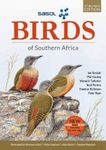Flora / Fauna Distribution Atlas
By: Robert J Dowsett, Dylan R Aspinwall and Françoise Dowsett-Lemaire
606 pages, 16 colour plates, 720 distribution maps
![The Birds of Zambia The Birds of Zambia]()
Click to have a closer look
About this book
Contents
Customer reviews
Related titles
About this book
This book presents detailed accounts of the more than 750 species known (among which there are 100 migrants from the northern hemisphere) in Zambia. Extensive fieldwork by the authors and many collaborators means that the maps (for all species except vagrants) present a clear picture of distribution in this country of some 750,000 sq. km. The text complements the maps, with a synthesis of what is known of ecology, status, movements, breeding seasons, taxonomy and conservation concerns.
This book is not intended as a field guide (there are few illustrations of birds), but as a handbook and distribution atlas, highlighting the status, distribution and conservation of each species.
More than 900 published references are cited, and there are details of ringing recoveries and a gazetteer of more than 800 localities. In 70 pages, the introductory chapters review the vegetation and major bird habitats, biogeography, migration, conservation and the history of ornithological exploration in Zambia.
Sixteen pages of colour photos illustrate the habitats of Zambia as well as over a dozen of the more typical bird species (including the endemic Black-cheeked Lovebird and Chaplin's Barbet). Zambia is at the centre of the Zambezian region of endemism, and its woodlands, dry forests and dambos harbour 57 of the 64 bird species confined to this biome.
This is the sixth account of the birds of Zambia (ex-Northern Rhodesia) since the first (Pitman 1934), and it updates and expands its immediate predecessor The Birds of Zambia (Benson, Brooke, Dowsett & Irwin, 1971).
Contents
About the Authors:
Bob Dowsett spent some 20 years in the field in Zambia, as ornithologist and game ranger, including 3 years with his wife Fran#oise on the Nyika Plateau (Zambia/Malawi). He collaborated closely with the late Dylan Aspinwall, whose job in the Ministry of Education enabled him (during 25 years) to travel throughout the country and to gain an unrivalled knowledge of Zambian birds.
Customer Reviews
Flora / Fauna Distribution Atlas
By: Robert J Dowsett, Dylan R Aspinwall and Françoise Dowsett-Lemaire
606 pages, 16 colour plates, 720 distribution maps





























